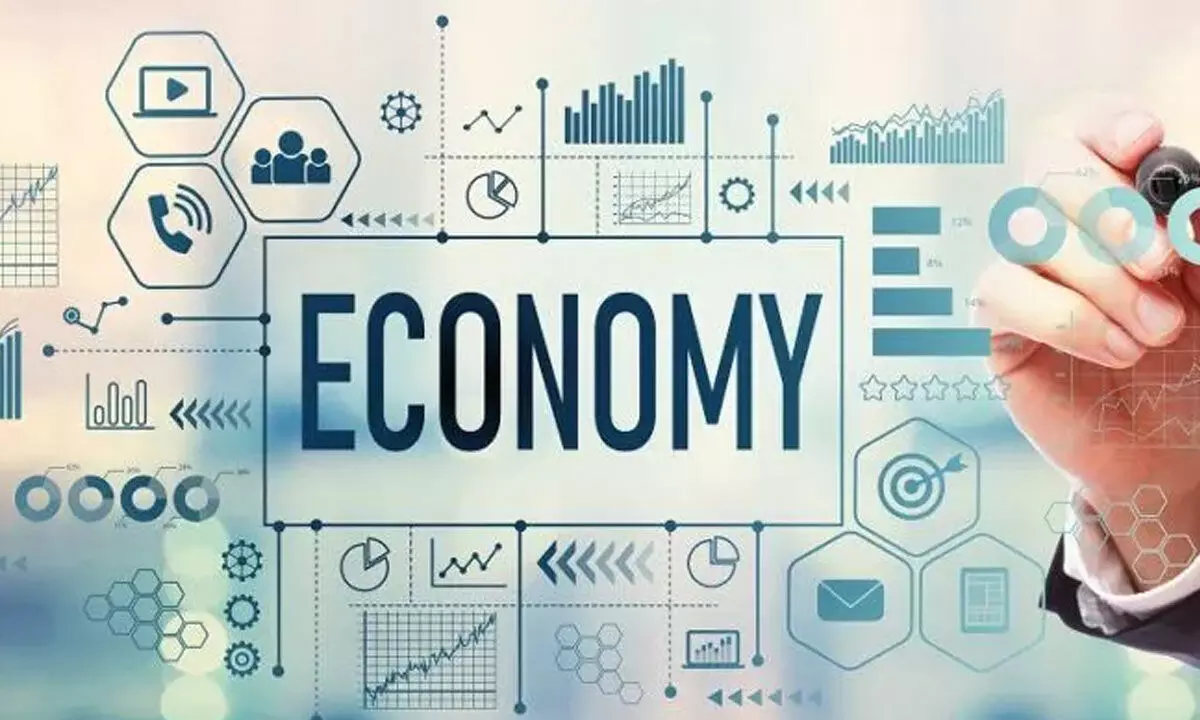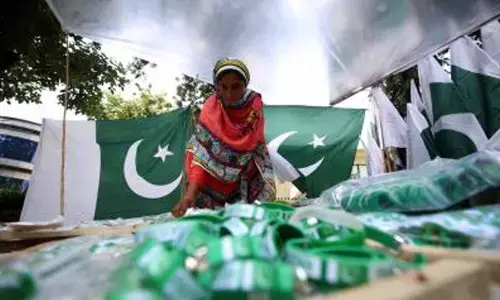Economy Revving Up in Q1 : Higher Inclusive Growth Needed

Economic growth is revving up in the current fiscal, with forecasts of over eight per cent growth being made for the first quarter
Economic growth is revving up in the current fiscal, with forecasts of over eight per cent growth being made for the first quarter. Leading credit rating agency, Icra Ratings as well as the research arm of the State Bank of India have put estimates for the April-June period at 8.3 and 8.5 per cent respectively. Overall growth for 2023-24 is still expected to be around six per cent, in the light of headwinds anticipated later in the year. Yet it is clear that India will retain the tag of the fastest growing major economy in the world for the current year.
SBI Research has based its assessment of a resilient economy largely on the push given by the services sector. Icra similarly identifies the continuing rise in services demand as a major factor contributing to the buoyancy in growth. It also highlights the improved investment activity linked to front-loading of government capital expenditure. The agency is not so sanguine about the rest of the financial year, which could witness headwinds in the form of erratic rainfall or slow down in government capex in the run up to the general elections.
The RBI’s projection for the April-June quarter, on the other hand, is slightly lower at 8.1 per cent but is more optimistic about the rest of the year, despite growing inflationary pressures. It has forecast 6.5 per cent growth for 2023-24, lower than last year but noteworthy in the light of the difficult geopolitical environment.
The positive outlook shows India moving contrary to global trends. The world economy has been slowing down and is expected to be 2.7 per cent in 2023 compared to 3.3 per cent in 2022. Even China has been assailed by headwinds and found growth dipping to 3 per cent last year.
It is no wonder then that global financial firm, Morgan Stanley has upgraded this country as an investment destination while downgrading China. This comes on the heels of leading credit rating agency, Fitch Ratings actually downgrading the credit rating of the world’s biggest economy, the United States. In another surprising move, China has also been given an investment downgrade by this leading investment agency.
The Morgan Stanley upgrade for India has highlighted the same aspects that other external agencies like the International Monetary Fund and the World Bank have been saying for the past six months about the Indian economy. It has talked about the potential of the Indian economy to grow at 6.5 per cent annually over the next decade while the Chinese economy may only be expanding by 3.9 per cent per annum over the same period.
These positive forecasts reflect the fact that India’s economy has been resilient, despite disruptions posed by the pandemic and then the Ukraine conflict to world growth. While India too faced contraction in growth during 2020-21 like many other countries, it managed to bounce back with a 9.1 per cent increase in 2021-22 and 7 per cent in 2022-23. The current fiscal is expected to end with growth at over six per cent.
This feat was achieved despite having to contend with external headwinds that have crippled many other economies. This has been possible largely due to moderate rather than expansive policies towards trade and industry during the pandemic. These were criticised at the time, even by this writer, especially for the limited credit relief package for small and medium enterprises. The focus instead was kept on a pipeline of infrastructure projects to stimulate growth in the medium and long term.
The central bank has equally played a major role. It aggressively hiked interest rates when inflationary pressures mounted last year. Government policies also had to be tailored to deal with the disruption of supply chains after the Ukraine war erupted in February last year. As for energy prices, these were kept under control by freezing retail prices of petroleum products for most of 2022.
The high productivity of the farm sector has been yet another factor in the sustained economic recovery of the past two years. It gave a push to demand and this, in turn accelerated the process of industrial revival. Latest data is showing signs of sluggishness in industrial growth, however, while inflation has shown a spurt. Both could be areas of concern for the rest of the year.
While the data is encouraging, it must be accepted that an emerging economy like India needs to grow at a faster pace to eliminate poverty completely. A comparison of India and China’s per capita GDP is sobering. It is 2500 dollars for India and 12700 dollars for our northern neighbour. This country clearly has a long way to go toward improving income levels and removing sharp regional disparities. Not only does it need to grow faster but it also needs to ensure inclusive growth to avoid the wide income inequalities that continue to exist here.
Woman injured in stabbing attack in Tokyo, suspect at large
Bengal cop booked for murder over mysterious death of woman home guard, SIT to probe case
Staffer recalls horror of 7-kg gold robbery by armed gang in Karnataka’s Hunsur
25-Year-Old Airline Cabin Crew Member Dies At Gurugram Party; Police Begin Investigation
















